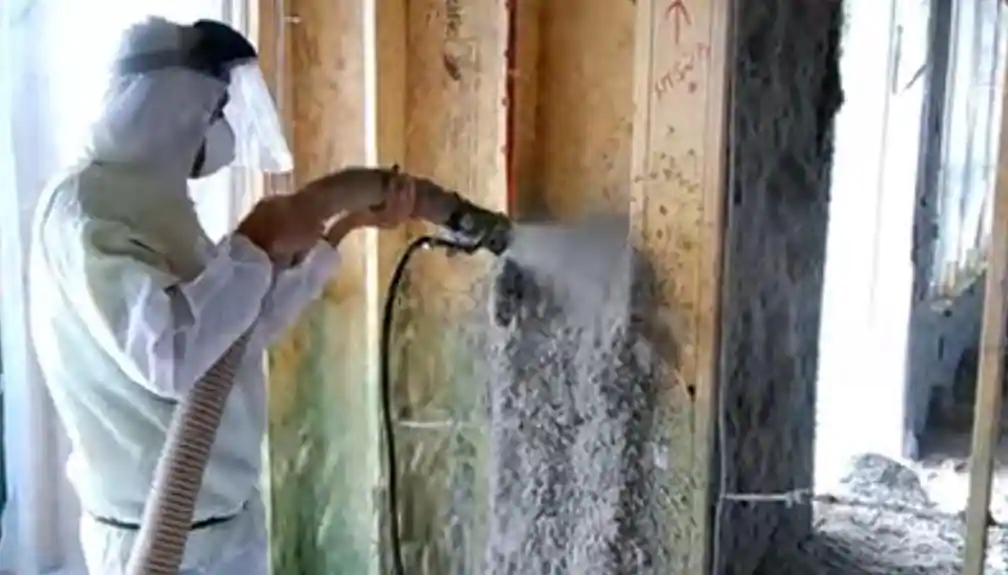wet spray cellulose, another insulation material used in buildings is cellulose, which is very useful for attic and wall insulation. It is made from recycled paper goods, like newspapers, that have been chemically treated to improve their durability against fire. Typically, cellulose fibers are mixed with water and other components to create an adhesive, which is sprayed over the surfaces that require insulation.
It is necessary to keep in mind that in want to ensure the correct application and efficacy of this insulation, wet spray cellulose insulation installation should only be completed by trained professionals or experts. Any insulating material should be selected and installed according to local building requirements. If you want to insulate your home, by using higher r-valued cellulose insulation, and want to read information about, cellulose insulation r value, click here.
Benefits of Wet Spray Cellulose
You will get the following benefits after using this insulation material
Environmentally beneficial:
Because wet spray cellulose is manufactured from recycled paper products, which lowers the demand for new raw materials, it is frequently seen as an environmentally beneficial insulation choice.
Energy Efficiency:
It helps control interior temperature and uses less energy for heating and cooling since it offers efficient thermal insulation.
Proper air sealing is achieved by the filling of spaces and holes in the building construction by the cellulose coming from the wet spray application. In addition, this insulation can able to reduce draughts, which can increase energy efficiency overall.
Provide Sound Insulation Quality:
Another benefit of wet spray cellulose is that it reduces noise. It could decrease noise transfer from outside the building and between rooms.
Fire Resistance:
Cellulose fibers are made more fire-resistant by treating them with chemicals that retard flames, which makes them a safer option for insulation.
Cost-Effective: Benefits of Wet Spray Cellulose
Generally speaking, it is a more affordable insulating alternative than other environmentally friendly ones. If you want to cost-effective and energy-efficient insulation material you will go with this types of insulation material.
Control of Moisture:
The insulating qualities of wet spray cellulose insulation are maintained with its ability to collect and release moisture. Better moisture control within the building exterior may result from this.
Mold Resistance:
Wet spray cellulose’s fire-retardant components additionally provide some resistance to the growth of mold, providing a healthier internal environment. This is all the benefits you will get after using this insulation.
Wet Spray Cellulose Insulation R Value
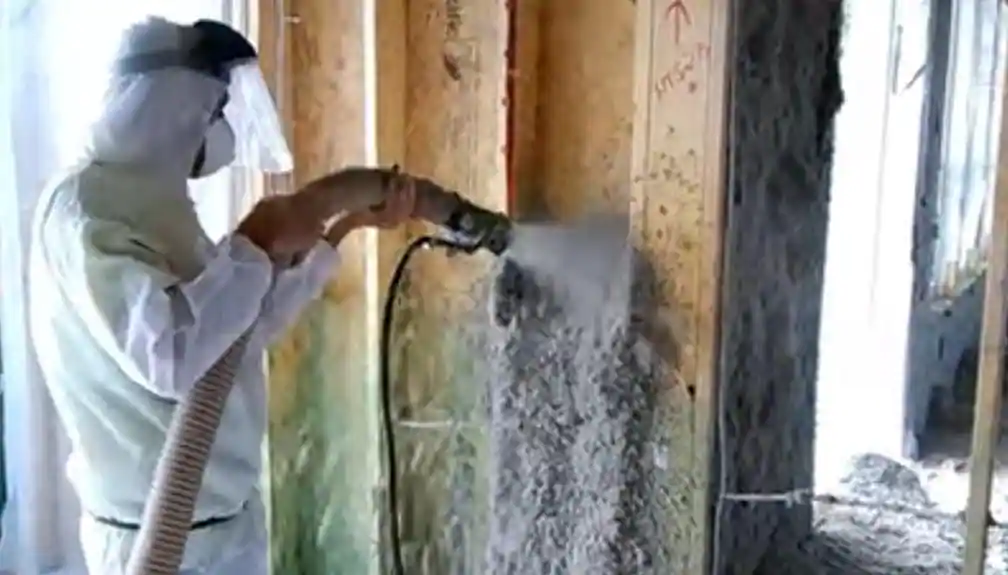
wet spray During installation, cellulose insulation is one kind of insulation material that is put down damply or wetly. It is composed of recycled paper fibers, mostly from newspapers, that have been treated with chemicals to resist and withstand fire. The cellulose fibers can attach to surfaces and provide a thick layer of insulation due to the wet application. There are the best companies like Johns Manville Spider Insulation, can able to provide best quality material with expert team of insulation installer.
Wet spray cellulose insulation’s R-value can change based on several factors, including product type, thickness, and density. But as a general rule of generality, the R-value of wet spray cellulose insulation typically ranges between 3.2 and 3.8 per inch. Remember that these values can change, so it’s important to review the specifications provided by the manufacturer for the specific product you are thinking about.
By reducing heat travel, the insulation’s R-value enhances a building’s energy efficiency. It means that the insulation helps maintain a more consistent indoor temperature during the hot and cold seasons, minimizing the need for unnecessary heating or cooling. Wet spray cellulose insulation can be more affordable than some other insulation options. Because it is cheaper due to the use of recycled materials, it is an excellent choice for people who are looking for a balance between both affordability and performance. So, we just say, wet spray cellulose insulation r value is best for high comfort.
Wet Spray Cellulose Insulation Cost
One type of insulation material that is frequently used to improve the energy efficiency of homes and buildings is wet spray cellulose insulation. The cost of wet spray cellulose insulation is provided in detail below:
Several factors can affect the cost of wet spray cellulose insulation, such as:
Location: according to where you are and the labor and supplies available in that area, costs could differ.
Installation Difficulty: The complexity of the installation method, including locations that are difficult to reach or extra preparation needed, may impact the cost.
The thickness of Insulation: Although thicker applications offer higher insulation values, they may also result in higher labor and material expenses.
Generally speaking, wet spray cellulose insulation costs between $1.50 and $3.00 per square foot. Remember that this is only an estimate and that costs could have changed.
Wet Spray Cellulose Insulation
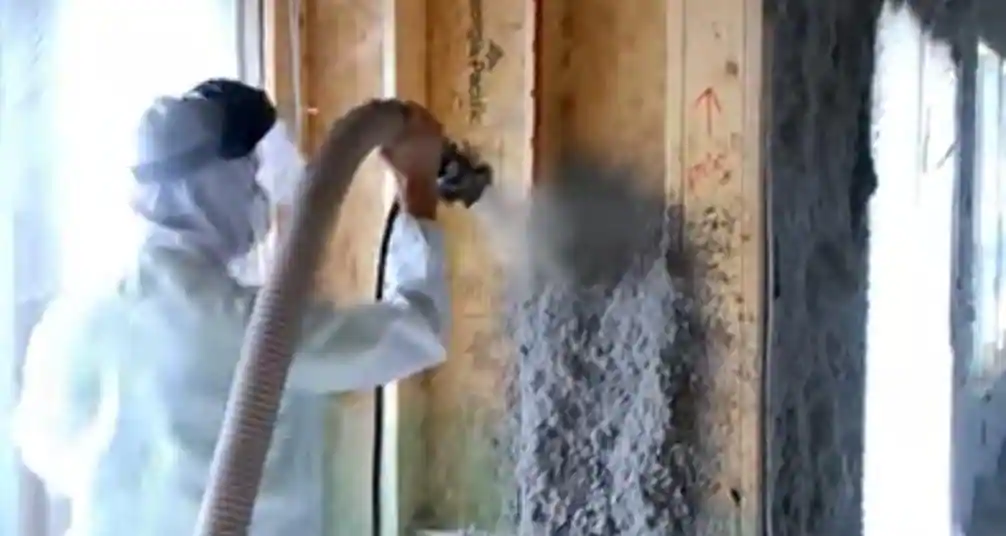
One kind of insulation that is frequently utilized in both residential and commercial construction is wet spray cellulose insulation. Because it is made of recycled paper fibers that have been chemically treated to resist fire, it is an environmentally responsible and sustainable choice. The following details are on of wet spray cellulose insulation:
Now see which are the compositions of wet spray insulation. The main and key components of wet spray insulation is Recycled newspaper or cardboard coated with fire-resistant chemicals like ammonium sulfate or boron is employed to make wet spray cellulose insulation. After the fibers have been cut into smaller pieces and combined with water, a solution is produced that can be sprayed onto wet.
Now see, how application had been done of spray foam insulation- The use of this insulation is a unique spraying machine is used to apply the wet spray cellulose insulation. Spraying the mixture onto walls as well as ceilings, and other surfaces requiring insulation is how it’s done.
This insulation can able to fill in gaps and holes on surfaces that have an excellent attachment, providing as a strong heat barrier.
Installing wet spray cellulose insulation is usually safe as long as the right measures are utilized. The insulation is safe for home usage means residential buildings because of the fire-retardant chemicals used in its production.
A flexible and environmentally friendly insulation option, wet spray cellulose insulation offers excellent fire resistance, sound absorption, and thermal efficiency. Because of how simple it is to apply, it is a popular option for both new building and retrofit projects.
Wet Cellulose Insulation vs Spray Foam
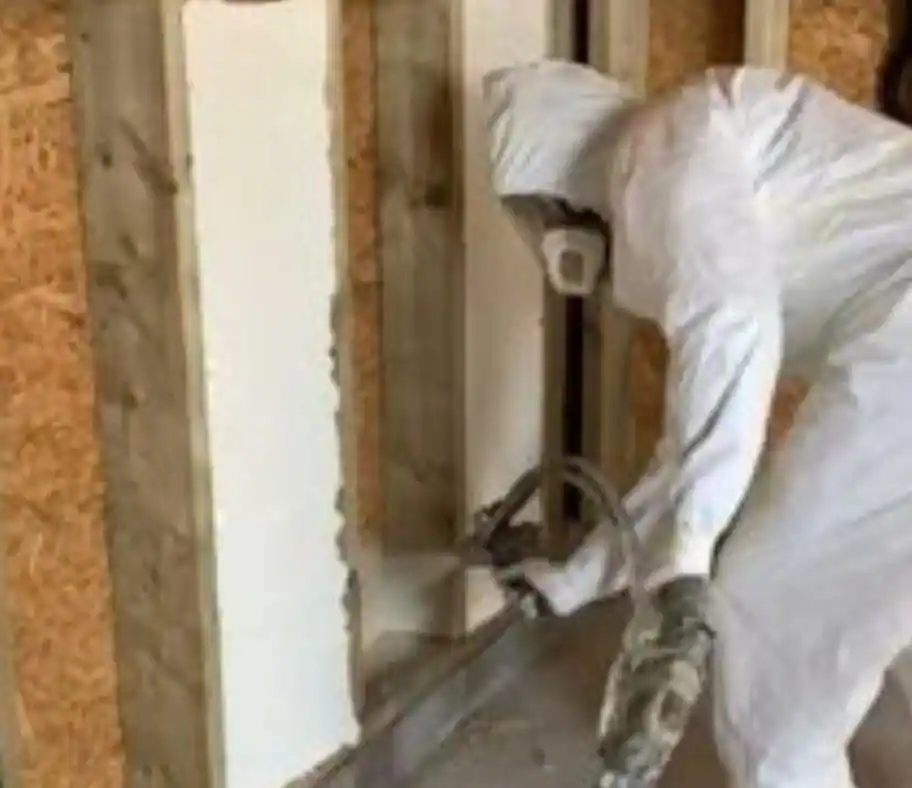
Two different types of insulation materials are commonly used in home improvement and construction: spray foam and wet cellulose. Each has its own unique set of features and advantages, so you need to choose between them frequently comes down to things like budgetary limitations, concerns about the environment, and specific insulation requirements. So, here in the following passage we try to provide an overview of the differences between spray foam and wet cellulose insulation means …..:
Choosing the correct insulation for your house is essential for sustainability, comfort, and energy efficiency. Spray foam and wet cellulose insulation are two common options, ranging each with its own special qualities. Let’s we will examine the distinctions and differences between spray foam and wet cellulose insulation individually, as well as the advantages of each and how to apply it.
Wet Cellulose Insulation:
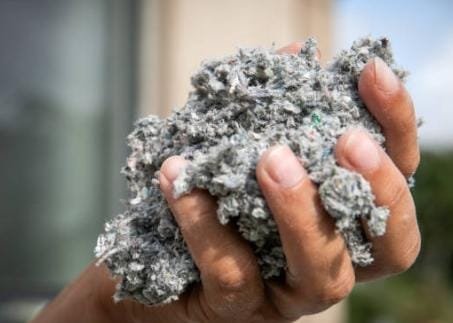
Composition of wet cellulose insulation: Fire retardants and chemicals are used on recycled paper products, such as newspapers, to avoid mold and pests, insects. This results in the chemical makeup of wet cellulose insulation.
Wet Spray Cellulose Advanatge
Following advantages and benefits, you will get by using wet cellulose insulation
- Environmentally Friendly: Wet cellulose insulation is regarded as environmentally friendly because it is made from recycled materials.
- Cost-Effectiveness: It is frequently less expensive than some other insulation materials.
- Effective Thermal Insulation: The thermal insulation qualities of wet cellulose are good.
The main component of wet cellulose insulation is recycled paper fibers, which are frequently treated with substances that avoid burning.
Application: Usually blown into attics, wall cavities, and other enclosed places, it is installed as a loose-fill material.
Installation: Qualified installers blast or spray the wet cellulose into the correct places using specialized equipment.
Spray Foam Insulation
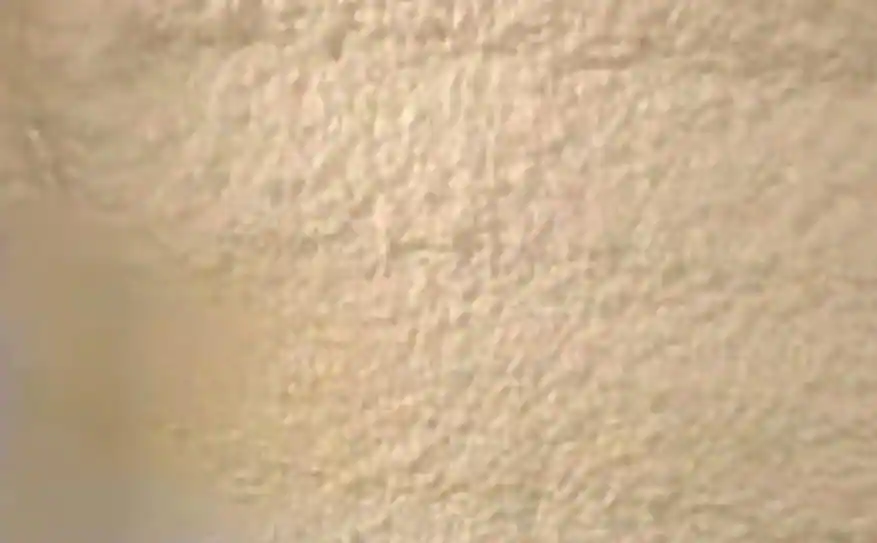
Composition: The main key components of Spray foam insulation are Polyurethane or other comparable polymers that grow and cement after spraying is usually used to make spray foam insulation. Spray foam insulation is made of a combination of chemicals that mix and expand to form a foam-like substance. There are two main varieties: open-cell and closed-cell spray foam.
benefits:
1. High R-Value: Compared to wet cellulose, spray foam insulation often has a greater R-value (a measure of heat resistance), offering superior insulation.
2. Air Sealing: Spray foam minimizes energy loss by acting as an effective air barrier that reduces air access.
3. Longevity: Spray foam is permanent and doesn’t change much over time.
Steps for Installation:
Surface Preparation: The area is prepared by finishing any potential air leakage points, such as wet cellulose.
Application: The components of spray foam are mixed and sprayed using specialized equipment. The foam fills gaps and expands as it is sprayed, forming an airtight, seamless barrier.
Curing: The foam quickly hardens and cures, providing a permanent insulation layer.
The decision between spray foam and wet cellulose insulation is influenced by several elements, such as the project’s specific demands, budget, and environmental concerns. Wet cellulose presents a cost-effective and environmentally sustainable alternative, however, spray foam is superior in terms of thermal performance and air sealing. It’s important to be concerned and think about your needs and then speak with insulation experts and take their guidance before choosing a choice to get the best answer for what you need.
On average, wet cellulose insulation is less expensive than spray foam insulation, but installation complexity and location might affect the final cost.
Now question arises in your mind, which surface you should use wet cellulose insulation, so read the next passage
Usually, attics and other enclosed spaces are insulated with wet cellulose insulation. It is commonly used to insulate-
Wall Cavities:
To fill gaps and provide thermal insulation, wet cellulose insulation can be blown into the wall spaces. This works especially well in older houses with limited wall space access.
Attics:
Wet cellulose insulation can also be placed in attics. It can be blown or sprayed onto the rafter walls and attic floor to prevent heat loss and efficiently insulate the area.
Roofs:
As part of the roofing system, wet cellulose insulation is sometimes put on the exterior of roofs. It should help to improve overall energy efficiency as well as comfort level and provide another continuous layer of insulation.
It’s important to keep in mind that wet cellulose insulation shouldn’t be installed in high-humidity areas like crawl spaces or basements because too much moisture could decrease the insulation’s effectiveness as well as promote the growth of mold.
Bottom Line, Wet Spray Cellulose, Wet Spray Cellulose Insulation and Cost
To sum up and provide a bottom line of the post, wet spray cellulose insulation, we should say it is a viable and efficient way to improve your building’s comfort and increase energy efficiency. Because of its special application technique, which uses a water-based adhesive, it can be seamlessly integrated into wall and ceiling cavities, guaranteeing a tight fit and superior thermal performance.
Wet spray cellulose has advantages that go beyond its heat-related characteristics. Moreover, this kind of insulation has exceptional sound-dampening qualities, which help create a cozier and calmer interior atmosphere. It is the most beneficial option for people who want sustainable insulation and concerned about the environment because of its environmentally friendly composition, which is frequently made from recycled paper or wood fibers known as sustainable insulation.
A building’s energy efficiency, comfort, and sustainability are greatly influenced by the insulation material used, and wet spray cellulose is a particularly adaptable and environmentally responsible solution.
Do let us know how you feel about this information by commenting.
Like our Facebook page and follow for other updates like this.

